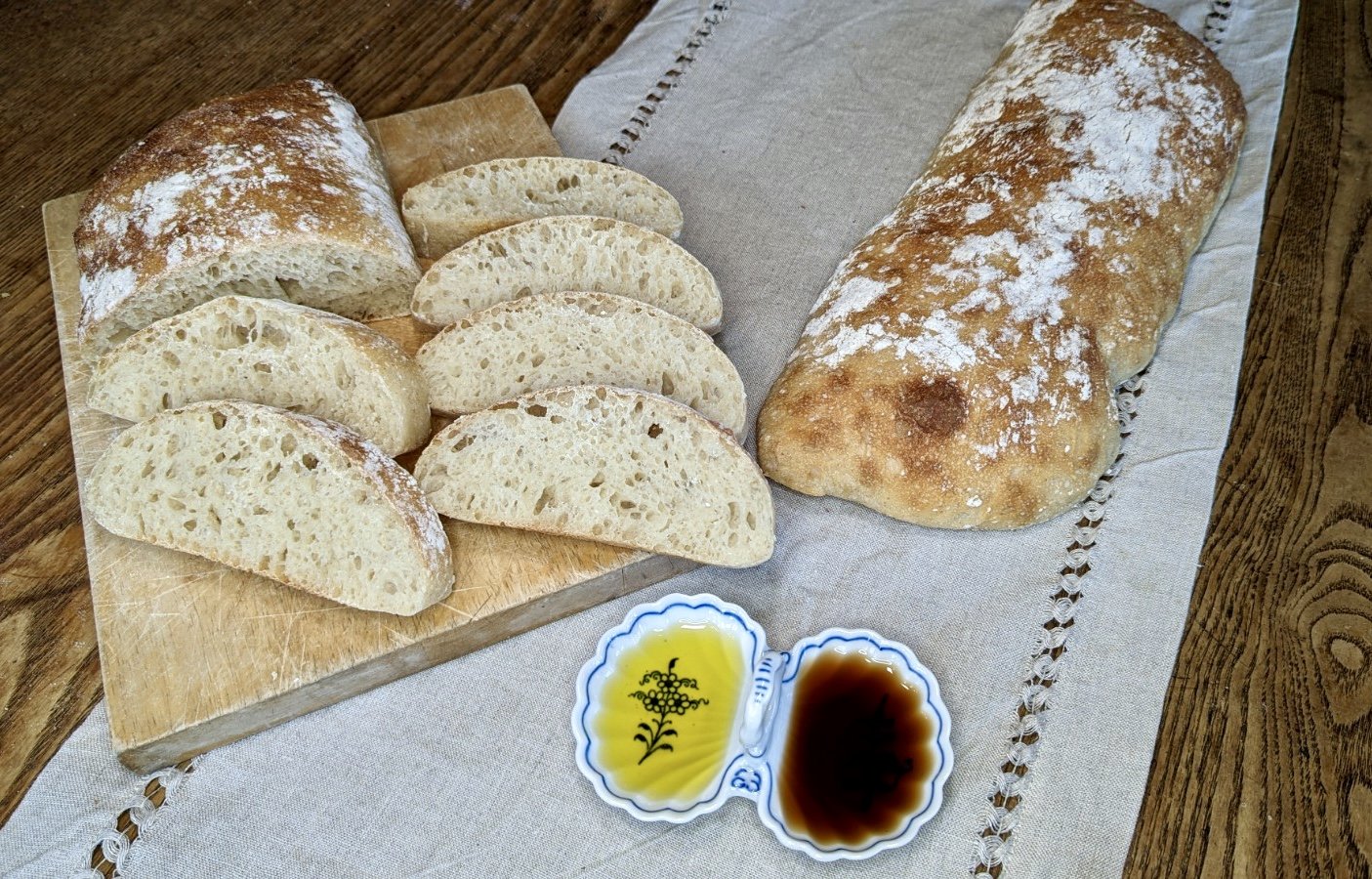Sourdough Ciabatta
Ciabatta is a rustic Italian white bread that is very similar to focaccia but without the addition of olive oil and toppings. It was created as a reaction to the popularity of the french baguette. The bread itself is a high-hydration dough that yields a very light, open, and airy crumb. These qualities make it ideal for dipping into olive oil or using it to make a fantastic sandwich.
Prep Time: 30 minutes
Rise Time: 22 hours
Bake Time: 25-30 minutes
Yield: 2 loaves of ciabatta
Ingredients:
500g bread flour
400g water warmed to 95°F or 35°C
150g active sourdough starter*
10g salt
Directions:
Combine all the ingredients in a bowl.
Mix them together to form a shaggy dough.
Cover and let the dough rest for 30 minutes.
Begin to strengthen the dough by doing a series of 5 stretches and folds every 30 minutes. I do 1 stretch and fold and then 4 coil folds to properly aerate the dough.
Cover and let the dough rise at room temperature until it has doubled or even tripled in size. This takes about 2-3 hours, but it may take longer if your kitchen is cold.
Once the dough has risen, put the dough in the fridge for at least 12 hours and up to 36 hours.
Remove the dough from the fridge and carefully turn it out onto a very well-floured work surface, then liberally flour the top of the dough as well.
Being mindful to not handle the dough too much, divide the dough into 2 pieces. Then gently place it on a baking sheet and loosely cover it with a tea towel or a proofing bag.*
Let the dough rise again for 1-2 hours or until it is nice a puffy.
30-40 minutes before you are ready to bake your ciabatta, place a cast iron skillet on the bottom rack of the oven and then preheat the oven to 475°F or 245°C. The cast iron pan will be filled with boiling water when you put the bread in the oven. This creates steam which helps the bread achieve a beautiful oven spring as well as a crustier crust.*
Place the baking sheet with the ciabattas on the middle rack of the oven. Then working quickly and carefully, pour 2 cups of boiling water into the cast iron skillet on the bottom rack of the oven, then quickly close the door to trap the steam inside the oven. When you do this be very careful, especially if you have oven mitts that are made out of cloth because you can get a really nasty steam burn if you are not.
Bake the loaves at 475°F or 245°C for 15 minutes then carefully remove the cast iron skillet and lower the temperature to 450°F or 230°C and bake for another 10 to 20 minutes or until the inside of the loaves registers at 190°F or 88°C.
Set loaves on a cooling rack to cool.
Enjoy!
Additional Notes:
*If your sourdough starter is slow, you can add 2g of commercial yeast and then proceed with the recipe as written.
*If you do have a sourdough starter you can still make ciabatta! Simply substitute the sourdough starter with a preferment (poolish) consisting of 75g of water and 75g of bread flour mixed with 2g of commercial yeast. Once you have combined the 75g of flour and water with the yeast, let the poolish ferment at room temperature for 12 hours. After your sponge has fermented, you can add all the ingredients listed in the recipe except the sourdough starter. The rising times may not be exactly the same, but as always with bread watch it and when it looks ready it probably is!
*You can also leave the dough whole if you want one big ciabatta, or divide it into 4 or 8 pieces if you would like to make smaller individual ciabattas.
*The preheated cast iron pan in the bottom of the oven is an important part of the recipe, if you do not use it the ciabatta may not turn out as pictured.
